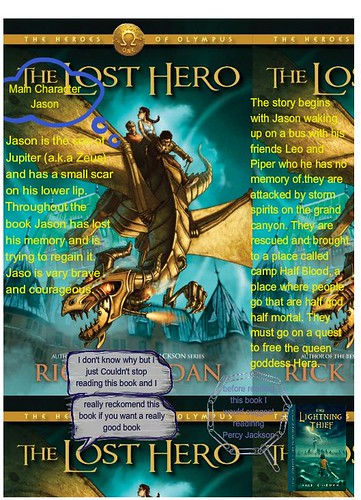My students are moving into a final week of creating poster projects as one component (but not the only) for our independent reading unit. They have the option of working on the poster online (with Glogster.edu) or offline (with regular poster paper). I would say about 2/3 of my students are using Glogster for their project.
The other day, I received a message from a student in our Glogging space, telling me that “my project is ready” for review. Ummm, not quite. I pulled the Glog up and my eyes began dancing the cha-cha-cha and I could feel a headache coming on. You would never have known that we have talked about design elements and use of colors and fonts and art, and shared examples.
Sigh.
I messaged him back, telling him “we need to talk” and then we did talk in class. I pulled up his project and asked him some pointed questions about his design choices (particularly about using the book cover for the background image, which many students are trying to do, but which won’t work unless you have a very simple book cover).
“What do you think I am going to say?” I asked.
“Uhhh. It’s hard to read?”
“Why? What do you see?”
Pause.
“I guess it’s got a lot going on. But I want the cover on my project.”
“Why not use it as an image and not the wall? That would still give you the use of the cover.”
Pause.
“Then you could read what I wrote? It’s hard to read. That’s what you’re talking about, right?”
“Yes, and you want the reader to learn what you know about the book. And notice your use of font color. Does yellow text work?”
“No. I guess not. It’s hard to read with that background.” Another pause. “I still want a green background. Can you show me how to do that?”
“Of course.”
I walked him through the process, helping him think about colors. He made changes, asked for my opinion again, and we both agreed that it was much easier to look at and understand.
“Now,” I began, “about some of the spelling …”
He examined his project again.
“I don’t know how to spell ‘recommend’.”
I pointed to the bookcase.
“That’s where we have our dictionaries. You know that.”
He moaned.
So here, Glogster gave me an opportunity to talk about design, offer up some suggestions for thinking through changes, review with a student on a project as it is still underway and conference a bit both in person and online. I love that flexibility. And while Glogster can sometimes seem to offer too many choices around design elements, we teachers can use that to our advantage through mini-lessons and guided discovery processes.
Peace (in the talk),
Kevin


Pingback: Tweets that mention More Design Talk w/Glogster | Kevin's Meandering Mind -- Topsy.com
I loved who you started the conversation with “What do you think I’m going to say?”. Your use of open ended questioning really allowed the student to reflect on his own work. It seems he really had listened to you about design, but really had his heart set on something. Glad to see that he reworked it – totally much easier on the eyes! Hopefully, he was able to see the before/after shots and really see the difference.
Thanks for sharing.
I agree, Nancy, that the question forced him to step back and see his work as a reader, not the composer. That stance helped him make the changes that were necessary.
Kevin